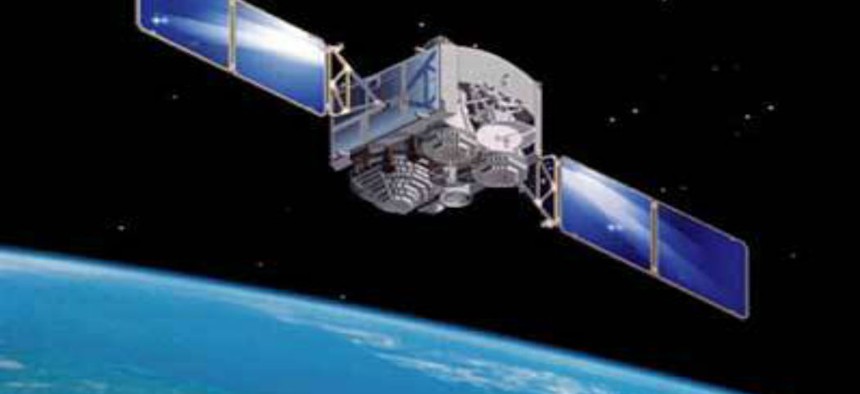New interferometry technology sought for keeping an eye on satellites
IARPA is accepting proposals for advanced technology able to image high-altitude satellites.
The Intelligence Advanced Research Projects Activity (IARPA) agency is looking for ground-based imaging technology powerful enough to clearly capture satellites in faraway geosynchronous earth orbit (GEO, according to the Office of the Director of National Intelligence.
Advanced interferometry technology will be the key to rapid and accurate imaging of GEO satellites that travel some 36,000 km above the earth, according to the IARPA broad agency announcement. One solution suggested by the Amon-Hen program is to use many small light apertures, instead of two large ones.
Basic interferometry involves projecting light beams through apertures, usually one beam split into two, at an object, according to NASA. When the beams are reflected off the object and recombine, small differences in their returning phase and amplitude measurements indicate the different “interferences” each wave encountered and help conjure an image of the target object.
Existing imaging technology, like the Naval Precision Optical Interferometer, uses two large light beam apertures. However, this method is not ideal for imaging satellites travelling in GEO, according to the IARPA Proposer’s Day Brief. Layering light waves beamed through a large number of apertures that are less than a meter in size may result in a higher resolution image and a faster return time.
This approach would allow multiple satellites in GEO to be imaged at once, according to IARPA. It would also solve the fringe measurement problems, or the clarity issues being encountered when the measurements of the two returning light waves are compared for evidence of interferences.
Regardless of the exact approach used, the requirements for technological advancement in interferometry include light collection, measurement, and algorithm improvement. The IARPA Proposer’s Day Brief emphasizes that the compilation of images from many dissociated light beams must be done efficiently.
The algorithms in development are intended to support image creation using many small aperture beams, rather than just two, as cost-efficiently as possible. The desired speed component of the technology will derive primarily from advanced software that can rapidly convert interferometric data into images. System modeling is another crucial function that the new algorithms must be capable of, according to IARPA.
The interferometric data measurements should be processed into images within 24 hours, with data compilation or a single GEO satellite taking less than an hour.
Geosynchronous earth orbits follow to the rotation of the earth so that even as the earth spins satellites in GEO remain in the same place relative to a location on earth. As NASA reports, this means that imaging systems are static and don’t need to move to keep the satellite in view. Weather and communications satellites commonly use GEO, but with more countries sending their satellites into orbit, it is increasingly important that the U.S. National Intelligence Agency have high-resolution imaging capabilities to monitor them.
The goal of the Proposer’s Day is to identify developers with new technologies and approaches capable of creating a cost-efficient passive interferometric imaging device for satellites in GEO. Once a development approach has been chosen, the program is scheduled to span 33 months. The first 15 months will be phase one and will include the development of physics-based technology and image construction software algorithms. Phase two will last the remaining 18 months and be focused on assembling component technologies and subsystems, according to the Amon-Hen program description.
Several proposal briefings have already been submitted and all proposals were due in early August. The Proposer’s day took place on August 11th.
NEXT STORY: Soldiers field test EW rugged prototypes





